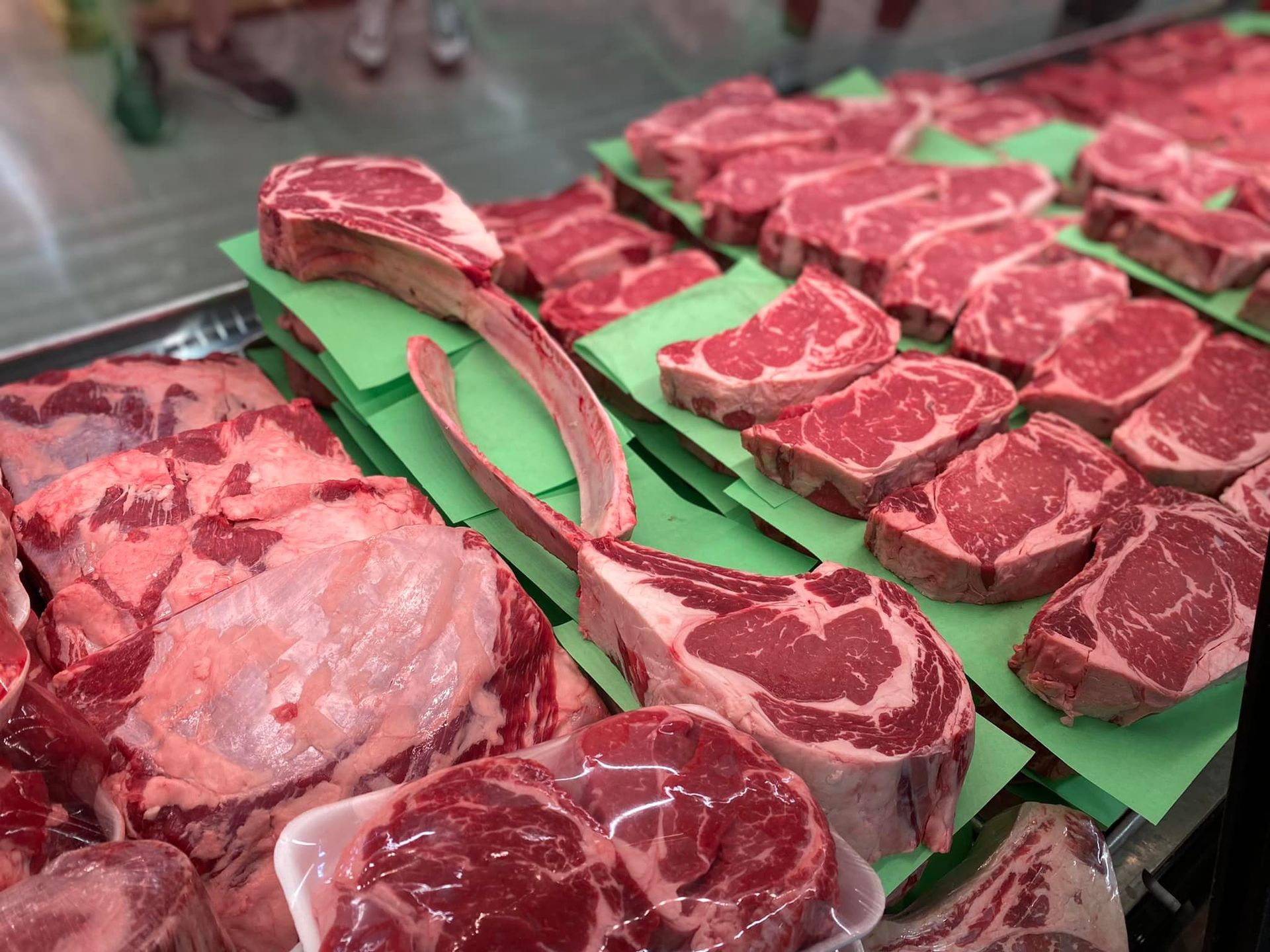Bagley Farms Meat Market Edwardsville IL: Your Best Location for Neighborhood Meat Option
Bagley Farms Meat Market Edwardsville IL: Your Best Location for Neighborhood Meat Option
Blog Article
Discover the Art of the Butcher's Cut in a Modern Meat Market
In the ever-evolving landscape of modern meat markets, the butcher's cut has actually transcended its conventional roots, merging old-time workmanship with modern practices. Today's butchers are not simply processors of meat; they are experienced craftsmens who emphasize sustainability and moral sourcing. Their expertise in choose and preparing cuts tailored to particular cooking demands supplies an exceptional dining experience. Yet, what absolutely sets the contemporary butcher apart is their ability to build a deeper connection in between consumers and the origins of their meat. Just how do these masters equilibrium custom with innovation, and what effects does this have for the future of meat intake?
Evolution of Butchery Methods
The evolution of butchery methods reflects an abundant tapestry of advancement and adaptation driven by developments in innovation, changes in consumer need, and a deeper understanding of meat science. Historically, butchery was a craft passed down through generations, with approaches developed over centuries to take full advantage of return and flavor. Nevertheless, the industrial revolution ushered in mechanization, transforming traditional techniques and allowing large-scale handling.
The mid-20th century saw butchery methods better fine-tuned by scientific understandings into muscular tissue biology and meat aging, enhancing both tenderness and taste. Advancements like vacuum packaging and refrigeration expanded item shelf-life, permitting butchers to expand offerings and boost quality assurance. This duration additionally noted the rise of specialized equipment, such as band saws and meat slicers, which enhanced accuracy and effectiveness in meat handling.

Electronic systems now help in tracking animal provenance and enhancing cuts to fulfill details customer choices. Furthermore, a renewal in artisanal butchery has actually arised, blending standard skills with modern knowledge to provide to customers looking for moral and sustainable meat alternatives.
Recognizing Meat Cuts
Comprehending the details of meat cuts is vital for both butchers and customers looking for quality and worth. For butchers, exact cuts show skill and regard for the craft, making certain marginal waste and optimal return.

Recognizing muscle composition is vital; muscles utilized more often by the animal have a tendency to be tougher and are best suited for slow food preparation techniques, while less-used muscular tissues, like those located in the loin, are extra tender and ideal for grilling or roasting. Familiarity with these differences equips consumers to make enlightened options, enhancing their cooking endeavors.
Picking Top Quality Meat
Choosing the ideal meat involves greater than just picking a visually enticing piece from the display. bagley farms meat market edwardsville il. The art of choosing top quality meat needs a discerning eye and knowledge of certain characteristics that indicate quality and quality. Firstly, focus on the shade; beef needs to have an intense, cherry-red shade, while lamb must display a soft pink tone, and pork a pale pink. This indicates the meat is fresh and hasn't been subjected to oxygen for also long.
Second of look at these guys all, think learn the facts here now about the marbling, which describes the white streaks of fat within the muscular tissue. Appropriate marbling is a key indicator of inflammation and taste, as it melts during cooking, improving the meat's juiciness. Keep in mind, greater marbling commonly correlates with exceptional top quality cuts, such as USDA Prime.
Structure is an additional critical factor; meat needs to feel strong to the touch, not slimy or extremely soft. Furthermore, be mindful of the scent. Fresh meat should have a tidy, neutral scent, without any sour or off-putting smells.
Pairing Cuts With Food Preparation Techniques

Conversely, tougher cuts like brisket and chuck roast are abundant in collagen, which breaks down right into gelatin when prepared gradually. These cuts are suitable for braising or sluggish roasting, permitting the meat to soften over time and establish deep, complicated flavors. Cuts such as short ribs and pork shoulder fare well with slow-cooking techniques, where extended cooking times change their durable appearances right into delicious dishes.
Lamb shanks and oxtail, which need prolonged food preparation to soften, are best candidates for cooking or sluggish simmering. These methods coax out abundant, passionate tastes while maintaining dampness. By comprehending the special attributes of each cut, chefs and home cooks alike can raise their cooking productions, guaranteeing each dish is both satisfying and memorable.
The Butcher's Function Today
Browsing the progressing landscape of the contemporary meat market, the butcher's role today extends past simple prep work of cuts. Contemporary butchers are culinary craftsmens, educators, and supporters for sustainable practices.
In enhancement to crafting accurate cuts, butchers currently engage directly with consumers, using cooking recommendations and tailoring options to click to find out more fit private requirements and preferences. Their knowledge in meat aging, marbling, and flavor accounts encourages consumers to make informed decisions, enhancing their cooking experiences. This personalized service exemplifies the butcher's developing duty as a relied on consultant in the kitchen area.
Furthermore, butchers are critical in lessening waste, utilizing whole animals to produce varied products such as sausages and supplies. This thorough method not just appreciates the animal yet also straightens with contemporary sustainability objectives. By doing this, the modern butcher symbolizes both practice and advancement, adjusting to an ever-changing market while preserving the virtuosity and stability of their craft.
Final Thought
Mastery in understanding varied meat cuts and high quality indications equips butchers to offer informed referrals, straightening certain cuts with optimal food preparation approaches. By honoring historic methods while embracing modern needs, the butcher's function remains essential in today's sophisticated meat market.
Report this page